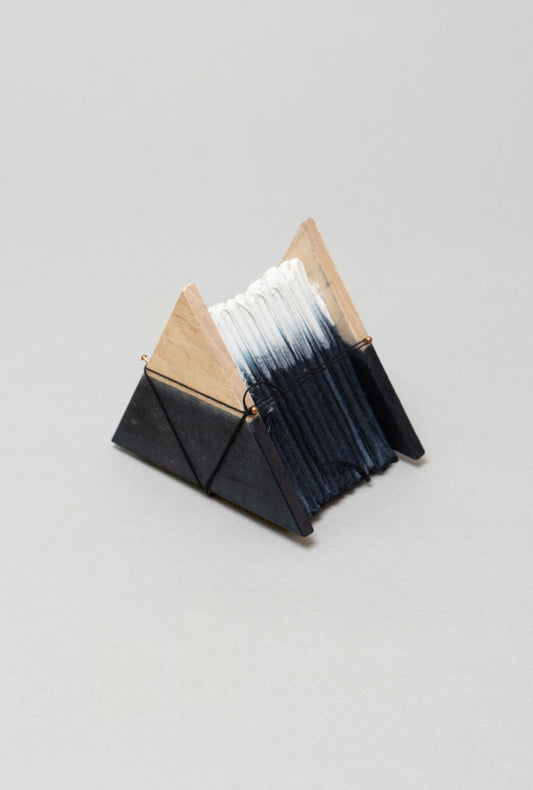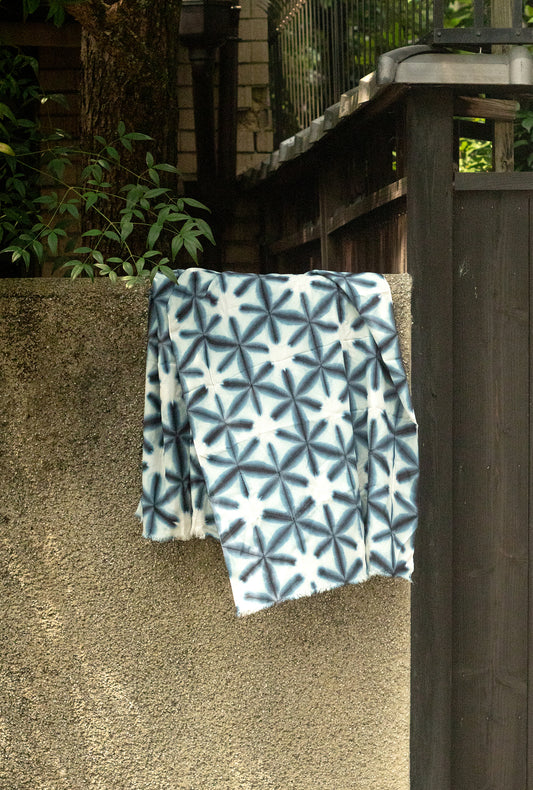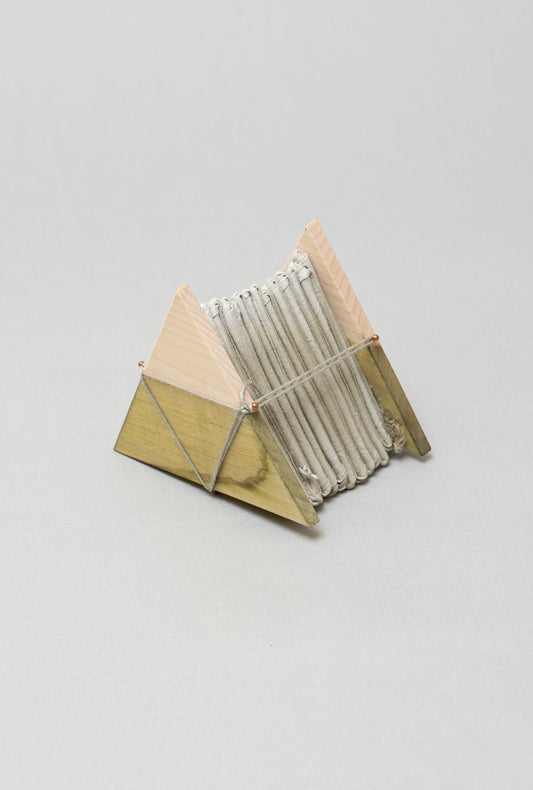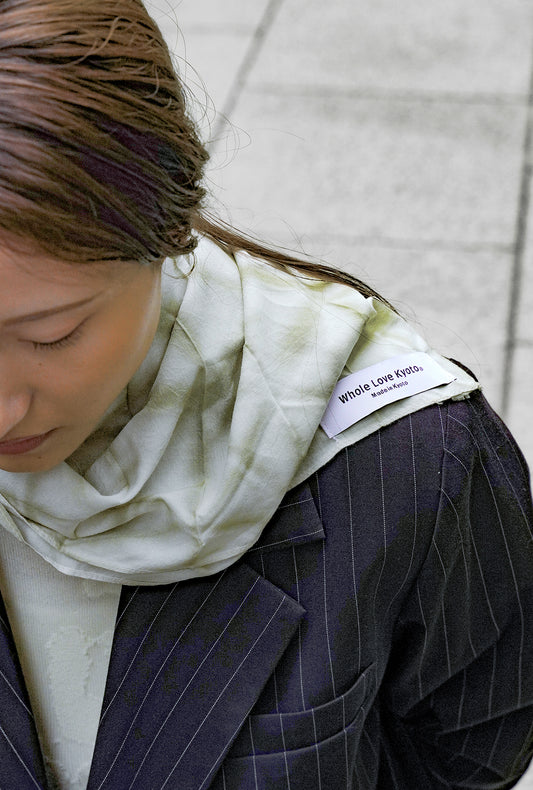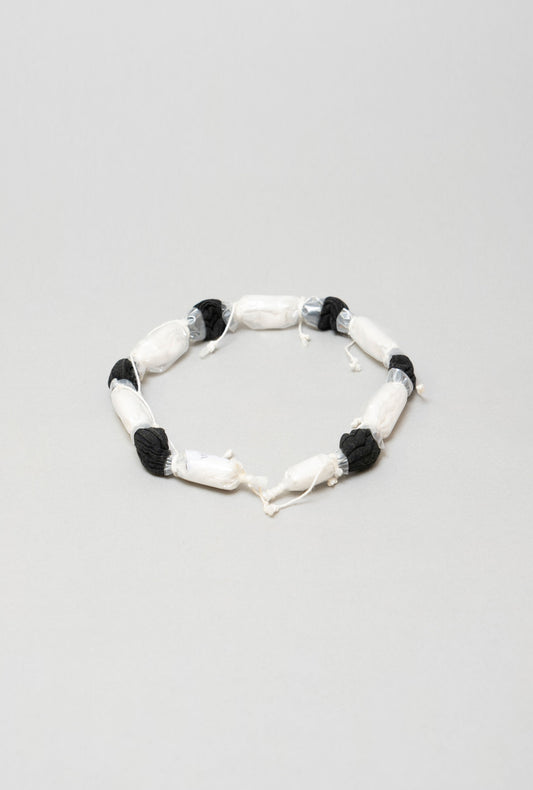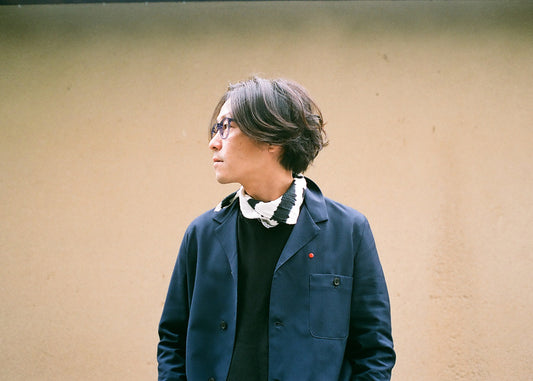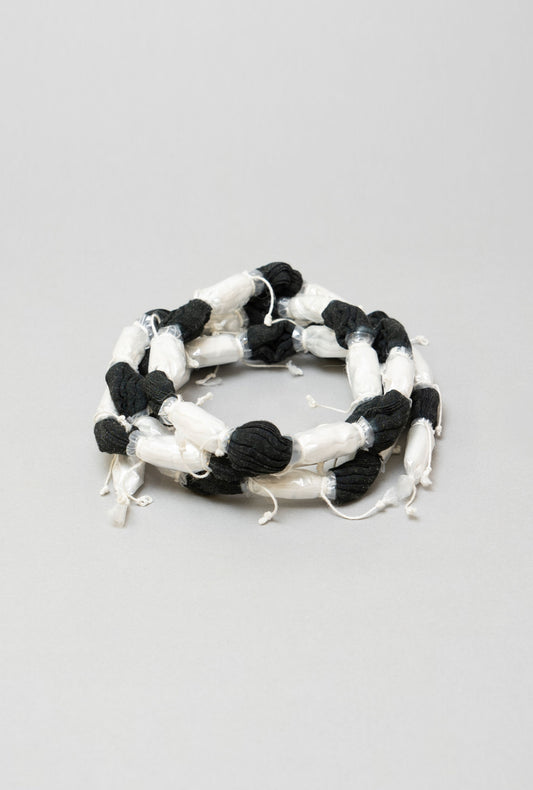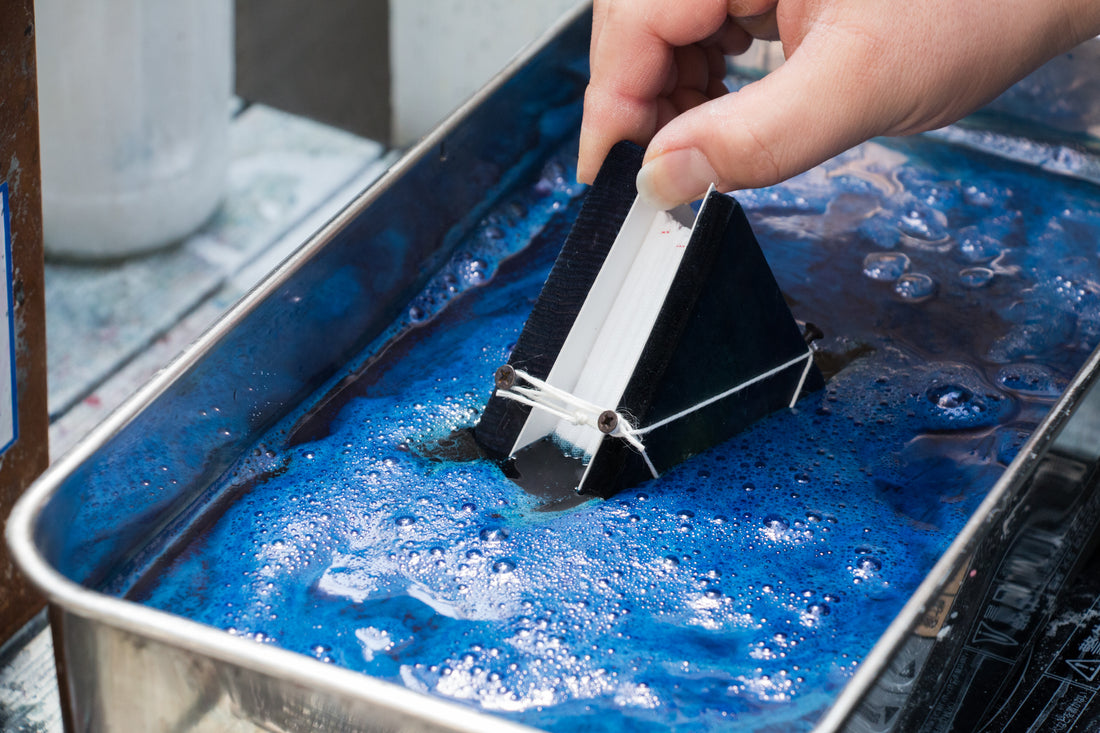
Tabata Shibori|tie-dye technique|01
Share
#01 Once you lose your handwork, it's gone. And you only live once.
The world of tie-dye has endured for over 1,400 years. Kazuki Tabata san of “Tabata Shibori” was drawn to the world of tie-dye by the magic of handicraft from the machine industry. Each piece of tie-dye has a different finish, and the fact that it is all done by hand gives it a unique flavor. The reason it is not well known is not because the technique is bad. The works that Tabata san creates are all fresh and new to us. He talked to us about the charm of tie-dye.

──How many years has it been since you started your company?
I started at the age of 25 and it has been 14 years. My father was originally a traditional craftsman of Kyoto Kanoko Shibori. I started as an acoustic engineer. I had no interest in tie-dyeing, and I only knew about it because my father used to do it. I was not interested in handwork because of the times, and I wanted to work with machines and computers. But when I saw and heard from my father that traditional crafts were disappearing, I felt it was a tragic loss. When I joined the business 10 years ago, there were no young people under me. The young people were all around my father's age, almost 70. Computers are machines, so the same thing can be done by someone who replaces you.
──My father was a craftsman, so when he died, there was no one to replace him, and that would be the end of it.
After 2 or 3 years of thinking that someone else could take over my father's work, I finally realized that the craftsmen I knew had either quit or passed away. When I saw all the remaining tools being disposed of, I thought, "If no one else will do it, I'll do it myself. After consulting with my own boss, I quit my job and entered the world of tie-dye. I was a full-time employee with a stable income, and I was married, but I felt that tie-dyeing would be a stable career for me in the future. I had many conflicts, but I knew I only had one life to live, and I wanted to avoid any regrets.

──Did you find it confusing to change from machine work to handicraft work, which is a completely different type of business?
It was tough when I first started because I had to sit crossed legs on the floor for almost 8 hours a day and only move my hands. Even if the first day went well, the second and third days, a month, and even a year of sitting still were painful, but if I left, I would not be able to work.
──When you entered the world of tie-dye, were you immediately taught by hand?
There were many difficult problems. When I started, there was still work in the kimono industry. But the jobs were disappearing rapidly, and the kimonos were being rented or made in China. Eventually, there were no more jobs for Japanese craftsmen, and we had to compete for work. The best way would be for a young person to join the company and pass on the skills, but what is the point of teaching a craftsman to do a job if he has to stop working? I realized this problem after I joined the company. Before I joined the company, I thought that the lack of young people would make it more exciting and that they would support me, but it is also difficult. When the number of jobs in the kimono industry decreased, my father and I didn't have enough work for both of us. Then my father said, "I'll take a part-time job and you can do shibori. I also had to do some part-time work while I was working to make the situation manageable. Still, there were times when there was no work for a week or two.
──Why did you continue to work in the face of such a situation?
I had a strange confidence that I could make it in this world. The products are very good, so young people can do what no one else can do, and Japan can send information to the world. Once people know about it, I think its beauty will definitely spread from there.

──How many basic types of tie-dye are there?
It used to be said that there were about 100 types, but since the techniques often die out due to lack of succession of technicians and materials, there are only a few dozen types now. The craftsmen don't do all 100 types, but specialize in three or four of them.
──Is there a possibility to create a new pattern now?
I think there is a great possibility. While tools are disappearing, new things are coming on the contrary.
If so, it will probably be inkjet printers. Considering the state of handmade work, I think what we can do will be limited. When you do something new, some things get lost. For example, in the past, bamboo bark was used to prevent dyeing (to keep dyes out), but that is no longer the case, and people are now using vinyl or nylon. Some people say that using this method makes the process "less shibori". There are places where the definition of "shibori" is lost. What is shibori? When you use a new tool, people say, "That's not shibori. Tradition is something that has been passed down from generation to generation, but if you do something new, people may ask, "Is that tradition? "It is difficult to draw a line between the two.

